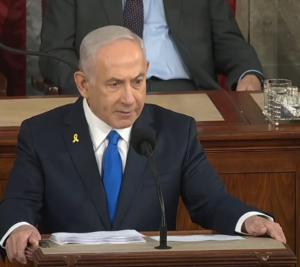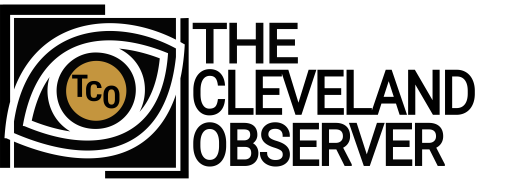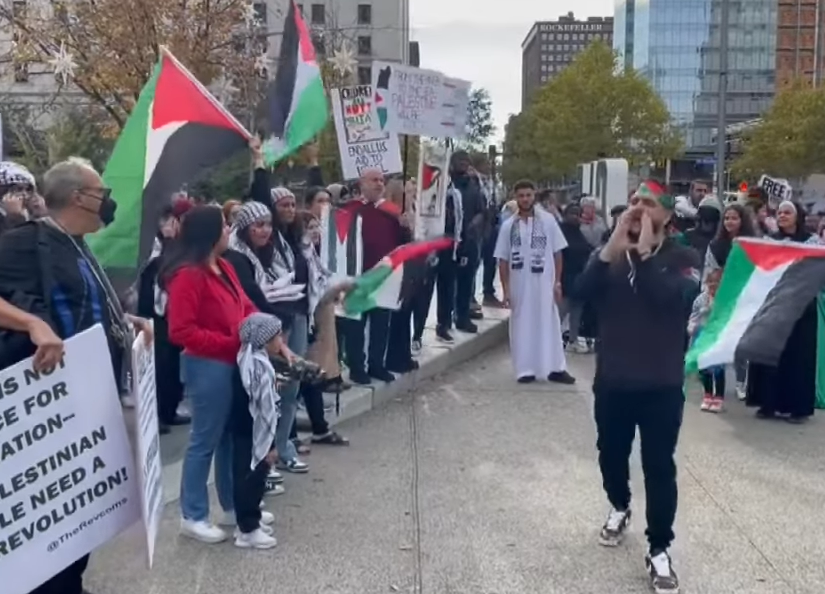Editorial By Sarai Murdock
The views reflected in this article are the views of the writer and not necessarily representative of The Cleveland Observer.
On October 7, 2023, Hamas attacked Israeli soldiers and killed an estimated 1,200 people and took about 250 people hostage. According to the Health Ministry, 38,000 Palestinians in Gaza have been killed, which does not distinguish between combatants and civilians. This has caused people worldwide to express their feelings through multiple types of advocacy, including people in Cleveland.
“My great-grandfather emigrated to America from Palestine in 1917. So way before Palestine was occupied by the Zionists. And he would go back and forth because he was a businessman. So he had traveled from America to Palestine, and then after 1948, he was not allowed back in,” says 21-year-old Gia, founder of Student Justice for Palestine at John Carroll University.
A lot of my family because of the occupation have either lost their homes, or they were not allowed back in, so we had to live in America and find a home here. As for my mom’s side, she was born in Jerusalem, but because there was a lot of violence happening in the 80s–when she was five, she fled to Jordan with her family and since then she was not allowed to even visit Palestine. So that’s something that has really affected our family.“
Twenty-year-old Yazan Issawi, president of the Student Justice for Palestine (SJP) student-run organization at Kent State University, had a negative experience the last time he visited his family in the outskirts of Jerusalem.
When he was just a young boy, in 2015, he was shot in the back of his thigh with a stun grenade by Israel Defense Forces (IDF) which gave him a second-degree burn. “That pretty much opened my eyes to what the Israeli occupation is trying to do and trying to erase the Palestinian heritage by all means necessary, and so being an American didn’t help me at the time because they saw me as a Palestinian.”
According to Human Rights Watch, some of the abuse people have suffered since 2023 includes water, fuel, and electricity blockages, starving them into famine, bombing homes, hospitals, churches, and schools, using white phosphorus against them, and facilitating multiple blockades. According to Times Magazine, generations of families have been wiped out, including elders and babies.
In response, people have been advocating in the streets, on college grounds, and through social media. Palestinian social media creators and journalists such as Bisan Owda, Plestia Alaqad, Motaz Azaiza, and other smaller content creators have gained a huge platform on social media to document their experiences and their peers, as well as get the voices of Palestinians around the world and spread awareness. Videos of decapitated children, bombs, and lifestyle changes have gone viral.
“This is one of the most documented genocides in history and we can literally open up our Instagrams and see pictures of children being killed and the videos of civilians being targeted and all that,” says Issawi.
Outside of social media, organizations such as Students for Justice in Palestine (SJP) at different colleges and universities have used their voices to show their ambition to spread awareness of the situation Palestinians are currently facing.
Between the beginning of 2024 and May, there was a rise in student advocacy at colleges and universities. Some of these schools included: Case Western Reserve University (CWRU), Kent State University (KSU), John Carroll University (JCU), Ohio State University (OSU), and more.
CWRU students gained a lot of attention between April and May as they held protests and some participated in an 11-day encampment on their campus. Jad Kamhawi Oglesby, a 2024 graduate of CWRU, is a local activist who is now studying law at Cleveland State University. He has participated in protests for the Black Lives Matter movement in 2020, the Pro-choice movement, and organized his protests as well.
“Student activism is important because it creates ripples that extend beyond our scope here as students on campus,” he says. “Standing in solidarity against genocide and apartheid is something that will not be silenced.” CWRU isn’t the only school catching attention.
In April, the Students for Justice in Palestine held a Palestinian-themed Fashion Show at their school. Not only did they represent Palestinian fashion and local designers, but they also took it as an opportunity to educate people about the conflict between Israel and Palestine and share the stories of Palestinians.
“A lot of times that we’re shown in the media, it’s violence,” says 19-year-old Yasmine, the president of SJP at JCU. “We wanted to kind of switch that narrative and show that Palestinians are not just death. We’re also vibrant people, we have a vibrant culture that we’d love to share with others.
So not only do we want to raise money for a foundation like HEAL, but also we wanted to do it in a way that says that we’re here, we’re proud of our culture, and it’s not something that can be easily erased.”
All ticket donations went towards a Cleveland-based organization called Health, Education, Aid, and Leadership Palestine (HEAL Palestine). With over 100 volunteers and several staff members, some of the work HEAL has done includes: bringing children from Palestine to the U.S. for free medical care, developing a field hospital in Gaza, feeding people every day through kitchens they run, distributing urgent supplies/aid, and running a mental health program in Gaza for children who are traumatized.
“We’re seeing so many kids with terrible injuries that have never really been seen before. The kind of suffering and injuries that, you know, amputations, burns, kids who’ve been orphaned, lost their parents, and have been injured themselves. It’s just terrible,” says HEAL co-founder Steve Sosebee.
The historic conflict between Palestine and Israel dates back to 1948. During World War l, political forces in different countries competed for control of Palestinian lands. With an increase in antisemitism, the Jewish population in Palestine increased amongst the Arab, Christians, and other Jews who had already been there.
The question of whether there should be an independent state for Arabs or Jewish people was discussed during the Sykes-Picot agreement and The Balfour Declaration. This led to war and conflict between the Arabs, the British, and the Jews. In 1947, matters were left for the United Nations (UN) to decide on and they came up with “The Partition Plan of 1947.” It suggested dividing Palestine into two states, an Arab and a Jewish state with Jerusalem as a separate UN-controlled entity.
A plan called the “Plan Dalet” aka “Plan D” was adopted to defend Jewish settlements outside of the Jewish state borders and take control of the area. This plan led to the Deir Yassin Massacre where over 100 Palestinians in Deir Yassin, including children and elders, were killed and violently attacked out of their homes. This establishment led to the Arab-Israeli War resulting in thousands of soldiers and citizens being violently killed, five to six thousand were Jewish and ten to fifteen thousand were Arab.

What took place the next day is referred to as “The Nakba.” Over 700,000 Palestinians were expelled and displaced from their homes through Israeli force. Some were violently forced to leave and some escaped as others were being shot and bombed. Palestinians were asked to leave without knowing they wouldn’t be allowed to return.
About 15,000 Palestinians were violently murdered, turning millions of native Palestinians into refugees.
“There’s so much room for interpretation, and there’s so much room for missed translation,” says Mara Layne, an American Jew who serves as a member of the leadership team at Jewish Voice for Peace (JVP) in Cleveland. twenty-year-old MiMi, an Ashkenazi Jew, lived in Israel for three months after graduating from high school. “That was really an eye-opening experience for me because of what the Israelis think of the Palestinians.
I think we have to close these borders or else we’re all gonna die,” she says. Both of them believe that there is a lot of inaccurate information being spread that alters people’s perspective about the conflict.“
I think the most important thing is just to have conversations and if that’s all you can do then that’s what you can do and just keep talking about it.”
The conflict between Israel and Palestine has motivated more people in Cleveland to use their voices and actions to create positive change, and a positive environment for diverse members of society. “I would love to see Cleveland continue to be a staple of activism and I really hope that that also starts within schools. I truly believe that Cleveland has that place where we can be a forefront for advocating for justice, for whatever it may be,” says 20-year-old Kamal Alkayali.
Sarai Murdock, born in New York and raised in Cleveland, is a local journalist, multi-disciplinary artist, and the young author of Bully Free Zone: How to Stand Up for Yourself.




